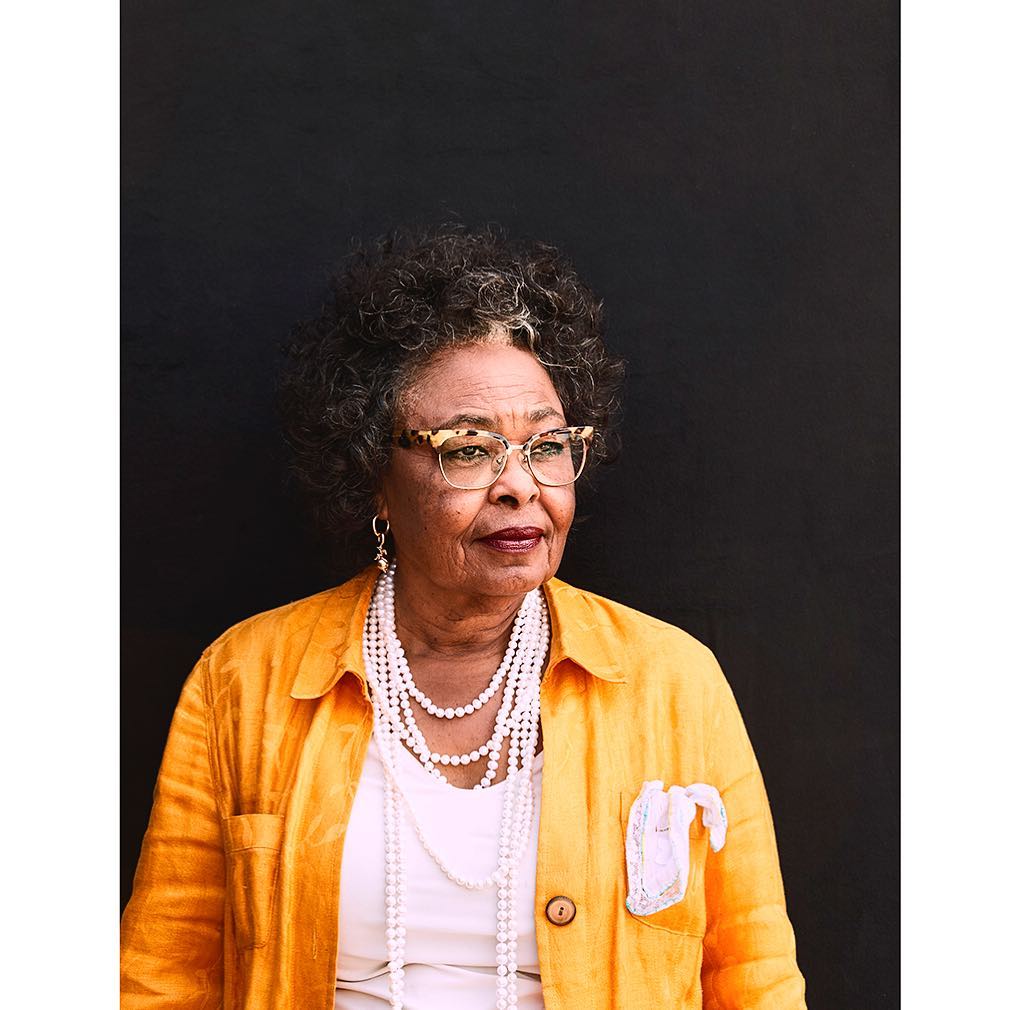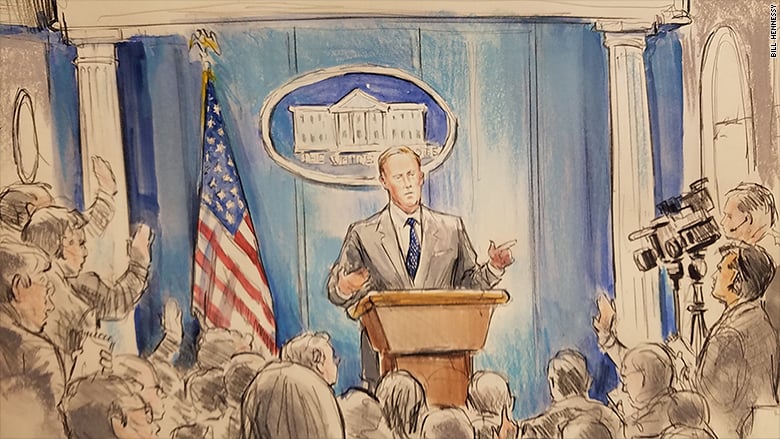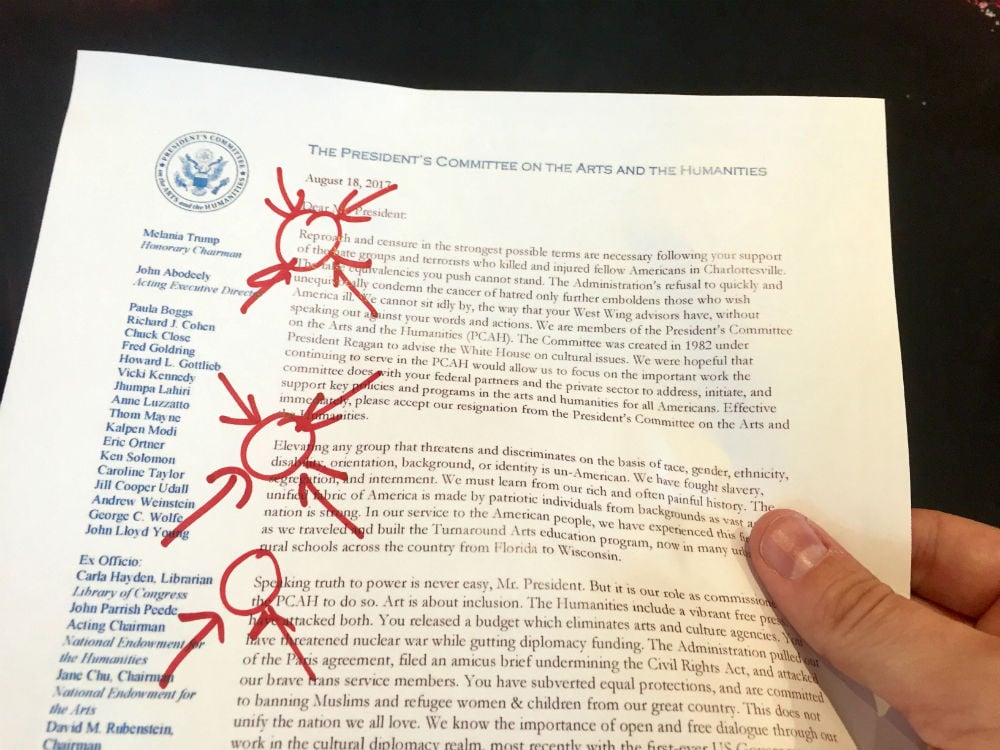Charles Mingus looks like he’s still deciding whether or not to say something.
In the mural that artist Jacori Perry began last year—one that launched a year’s worth of conflict in the city of Los Angeles—the late, Watts-born jazz great’s eyes are squinting and his lips aren’t quite open.
His face floats against a nondescript gray wall on the Charles Mingus Youth Center, just yards away from the Watts Towers, that looming, virtuosic feat of folk art that has become a symbol of against-the-odds ingenuity in Southern California.
Mingus looks disembodied because, according to the artist and the director of the Watts Towers Arts Center campus, the mural isn’t finished. It hasn’t been touched since the day the artist began to work on it last fall.
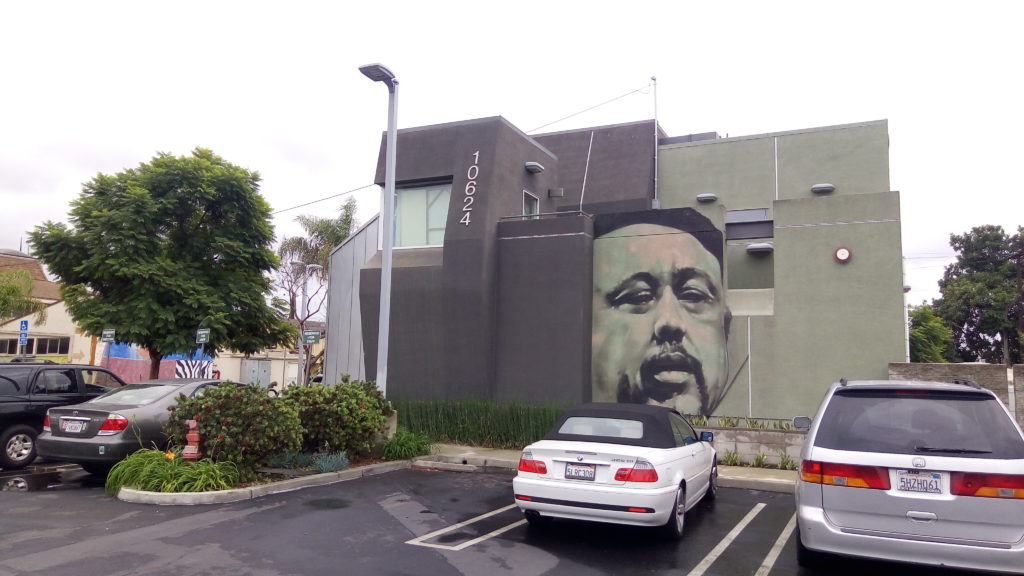
The mural on the façade of the Charles Mingus Youth Center. Photo: Catherine Wagley.
The extent of the mural’s completion became a point of contention on September 13, during the court-like Civil Service Commission meeting in the downtown Los Angeles City Personnel Department building. Rosie Lee Hooks, the longtime director of the city-owned Watts Towers Arts Campus, had been suspended three months earlier for allegedly breaking the rules in order to allow Perry to paint the Mingus mural on the campus’s Mingus building.
This kind of dry, bureaucratic dispute is normally swiftly swept under the rug or condensed into a few lines in a community newspaper. But Hooks’s dismissal came at a particularly volatile time: a number of visible and popular female arts leaders had recently been ousted from their positions; community spaces in gentrifying neighborhoods across the city were facing uncertain futures; and the wealth gap in the LA art world and in the city at large had never felt wider.
So Hooks’s suspension hit a nerve. Members of the art center’s various support groups ensured the news reached major publications, including the Los Angeles Times and Artforum. Her supporters argued that the suspension was emblematic of larger rifts between the city government and the long-disenfranchised neighborhood. The Department of Cultural Affairs, by contrast, maintained that it was simply enforcing necessary policies to keep both city employees and property safe.
A Long Legal Battle
The nearly yearlong saga surrounding the Mingus mural began on September 26, 2017, and was sparked by something innocuous: an email. As Perry started to paint that morning, the supervisor Leslie Thomas, who oversees all 18 city-run arts centers, stopped by and asked if the mural had received proper approval. Told it had not, Thomas directed the artist to stop.
Hooks—a longtime member of the a capella group Sweet Honey and the Rock, and director of the Watts campus for 16 years—wasn’t there at the time. But Thomas sent her an email that afternoon telling her to halt all mural-related work immediately.
Here, the two sides diverge. Hooks says she had not yet received the email when she told Perry to continue his work until the end of the day, just long enough to make the mural look sufficiently realized to prevent vandalism. The DCA, on the other hand, maintains that Hooks knowingly defied her supervisor’s order.
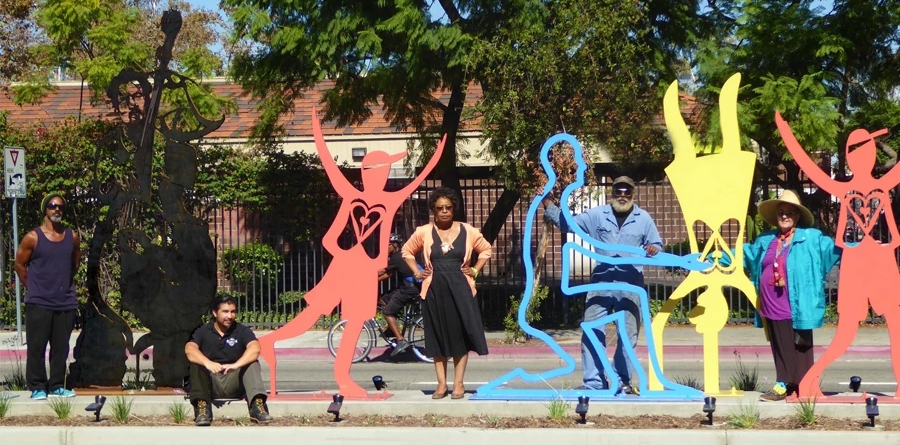
We Are Watts Gateway Monument (2015). Watts Towers Arts Center Artists-In-Residence team: Augustin Aguirre, Crystal De La Torre, Kenzi Shiokava, Charles Dickson, Carlos Spivey, Norma Haas Rosen, Director of the WTACC Rosie Lee Hooks, and Educational Coordinator of WTACC Rogelio Acevedo.
Back in the Civil Service Commission room, half an hour into proceedings that should have gone swiftly, the DCA’s representative explained all of this to the five commissioners gathered to hear Hooks’s case.
One of them, Todd Sargent, a Disney executive with a foot in politics, interrupted. “This is where I go off script,” he said, fed up. “I think the appellant [Hooks] was doing the right thing for the city, and [..] I know rules are there for a reason, but this just seems like a waste of everyone’s time.”
Why It Struck a Nerve
Technically, Rosie Lee Hooks was suspended without pay for three weeks in April for two alleged offenses: First, knowingly violating a DCA policy by allowing the mural to proceed without submitting the proper Public Art Committee application, as a recently-revised policy requires.
And, second, for defying supervisors by not ceasing work on the mural quickly enough. She appealed in mid-April, ensuring her right to a public hearing. The hearing examiner would have 30 days to submit recommendations to the Civil Service Commission, which was responsible for the final ruling.
After Hooks appealed, community arts supporters and local politicians rallied to support her. Watts Towers Arts Center staff addressed a letter of protest to the mayor.
Some have drawn a connection between Hooks’s suspension and the greater politics in the neighborhood. “This whole campaign to remove/terminate Rosie cannot be viewed outside of the context of the gentrification of Watts and the repurposing of the Watts Towers Arts Center to the coming new population,” Geoffrey Garfield, Hooks’s union representative, told me back in April.
Watts has been a battleground in the war over gentrification in Los Angeles for years. Between 2016 and 2017, home resales in Watts increased 24 percent, a steep rate for the low-income area, and local activists have been fighting what they describe as legally dubious evictions. Watts Towers supporters have also fought the Tony Hawk Foundation’s plan to build a skate park adjacent to the towers.
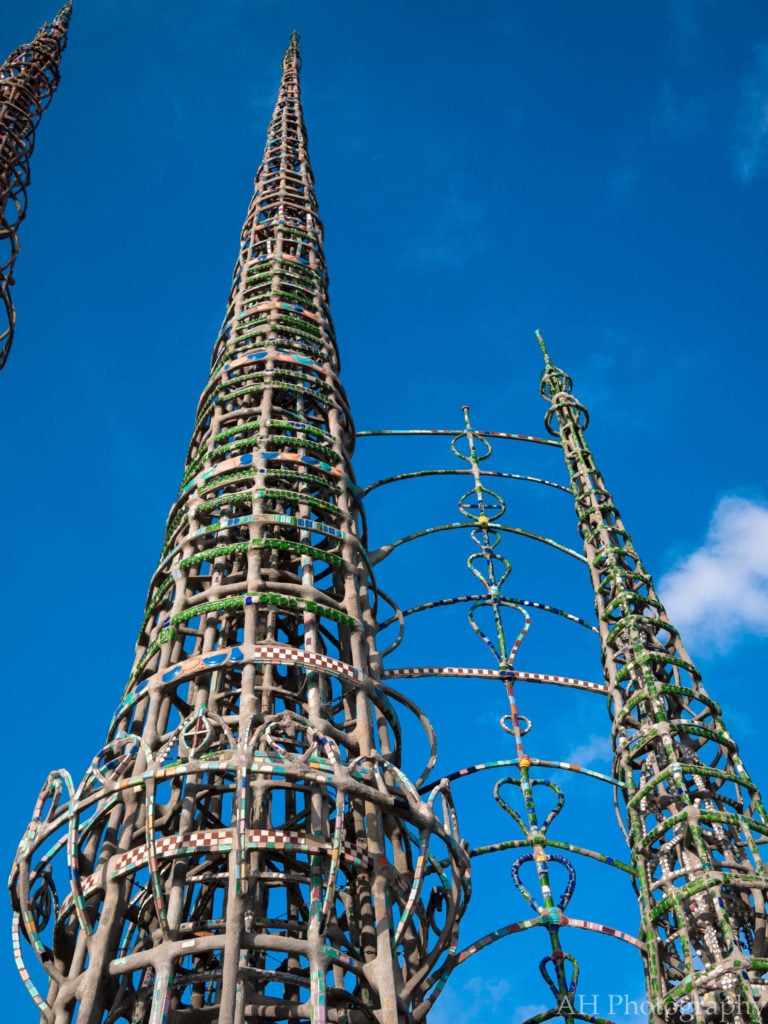
The spires of the Watts Towers. Courtesy of Flickr.
In Garfield’s words, the “new population” coming into Watts “will not hesitate to build their skateboarding ramps, deny drum circles (‘The noise!’), and slowly change the nature, personality and culture of the neighborhood as folks who have held it down for decades are priced-out of their homes and apartments.”
To be sure, the fight over Watts is not unique. Tensions around development, rising rents, and chic new businesses and galleries emblematic of undesired change run hot in many East LA neighborhoods, notably Boyle Heights. But Watts advocates recognize what some other protesters have overlooked: that unwanted change often results from small bureaucratic decisions made not inside white-walled gallery spaces, but in drab municipal offices.
Certain Watts advocates fear that the loyalties of the mayor’s office lean more toward developers than longtime residents. And they believe that Hooks’s treatment is emblematic of this allegiance. In an email distributed widely, filmmaker and historian Edward Landler, who made a 2006 documentary about the Watts Towers, wrote: “[W]e have asked the Mayor’s office and the Department of Cultural Affairs for a statement of their vision for the Campus and Watts.” (Community members have also broached this question repeatedly at Watts Tower’s Interdepartmental Task Force meetings, meeting minutes note.)
“We have yet to get an answer,” he wrote. “Is Ms. Hooks’s suspension their answer?”
A Long History
The dispute over Hooks’s suspension also hit on a pernicious narrative that longtime South LA advocates have worked to dispel for decades: that culture does not exist in the neighborhood until wealthier, more powerful people from other parts of the city bring it there.
(This notion was perhaps unwittingly put forward by more recent arrivals, such as painter Mark Bradford’s Leimert Park nonprofit Art+Practice and the Los Angeles County Museum of Art, which plans to open storage facilities and a satellite space in South LA. When it was announced, the museum’s director, Michael Govan, explained: “the idea was to branch […] out into communities that were interested in having culture.” The implication, some felt, was that they did not already have it.)
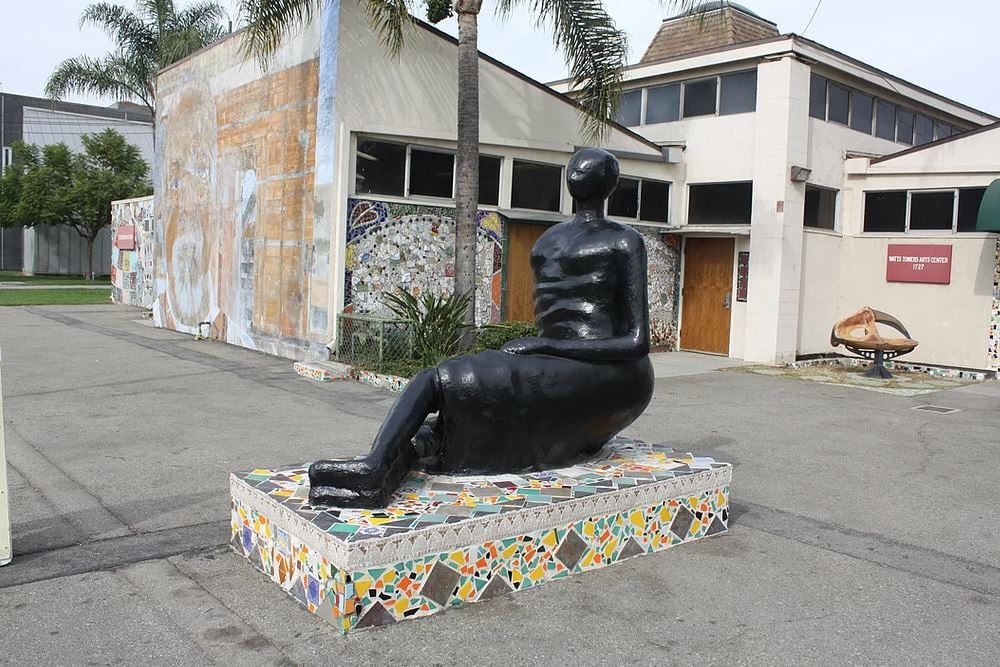
Bill Watts and Curtis Tann’s sculpture Mama Watts. Courtesy of Watts Towers.
Hooks, who began working with the center in the early 1990s, was familiar with these narratives. The 2005 documentary Fertile Ground, which she co-produced, chronicles the center’s contribution to Los Angeles, often pitting the community’s history against the city’s.
The film begins with Congresswoman Maxine Waters, a friend of Hooks’s, leaning against Mama Watts (1965), a larger-than-life, Henry Moore-inspired concrete and mosaic figure by artists Bill Watts and Curtis Tann. “History is very interesting,” Waters says. “Many people believe that the art center started in 1965 as a result of the riots.”
She holds up an official-looking, though illegible, document and declares: “The city of Los Angeles has been publishing this lie since 1999.” (Reached by phone and asked to comment on Hooks’s suspension, a field officer in Waters’s LA headquarters said only, “The center is near and dear to our hearts.”)
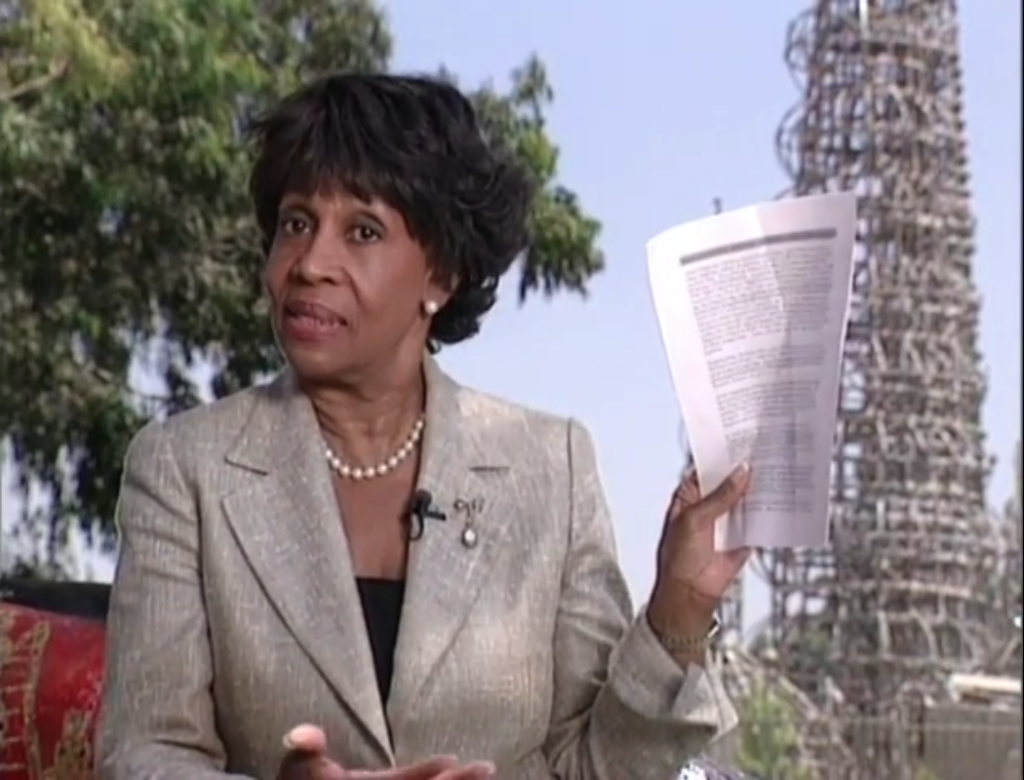
Sill of Maxine Waters in the documentary Fertile Ground.
The reality of the center’s history is this: In 1959—six years before the six-day wave of riots over a confrontation between a black man and a white police officer gave the area its international reputation—a group of artists and activists formed to fight the city’s 1956 order to demolish the fantastical towers that Italian immigrant Simon Rodia had begun building 42 years earlier.
After they won, they started hosting art classes for neighborhood children nearby. Then, in 1964—a year before the riots—the committee bought a small bungalow yards from Rodia’s magnum opus and hired the African American artist Noah Purifoy as the center’s first director.
Neighbors and supporters raised funds to build the current mural-swathed Watts Towers Arts Center in 1970. Then, in 1975, the Committee for Simon Rodia’s Towers in Watts deeded to the city the towers and the freshly built-out center (they gave the towers to the state), and artist John Outterbridge became its first city-employed director. Like his predecessors, Outterbridge often felt more connected to his community than the high art world, which has only recently begun to covet his work. (Scholar Yael Lipschutz, who co-curated LACMA’s 2015 Purifoy retrospective, writes about how Purifoy’s association with the Watts Towers contributed to scholars falsely characterizing him as a “folk” artist.)
Hooks, the first female director and the first who isn’t also a studio artist, follows in this same community-oriented tradition. In 2008, when the MOCA Los Angeles hosted a series of re-performances of Allan Kaprow’s scores, Hooks re-did his Trading Dirt (1983), asking Watts neighbors where their dirt came from and taking a bucket of it to the next resident to share its origin story.
“It was arguably not very Kaprow,” Jori Finkel wrote in the New York Times at the time. While his spontaneous interactions were never well-documented, hers was crafted—most of the dirt-trading neighbors were artists she respected—and filmed to preserve neighborhood history.
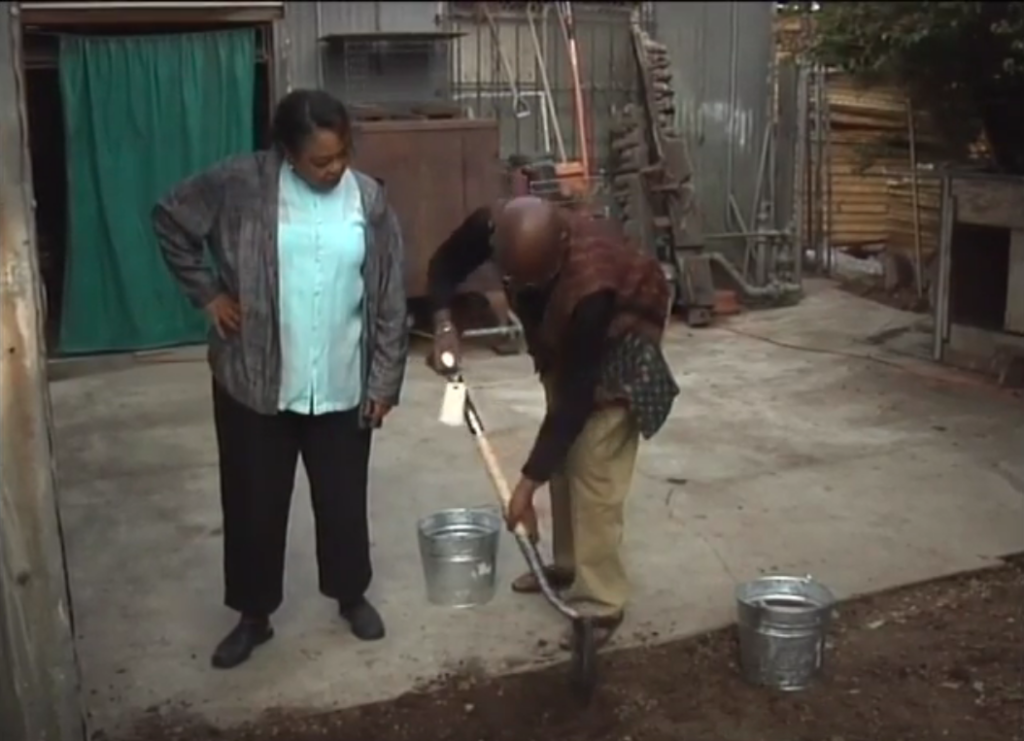
Former Watts Towers Arts Center director John Outterbridge and current director Rosie Lee Hooks in Trading Dirt with Simon Rodia & Allan Kaprow, produced by DCA General Manager and directed by Rosie Lee Hooks, Los Angeles, 2008.
The Appeal
On July 31, Rosie Lee Hooks’s initial appeals hearing played out in a nondescript room on the third floor of the city’s Personnel Department building. Much of the hearing boiled down to whether Hooks had attended a May 5, 2016 meeting where the staff discussed DCA public art policy. Her supervisor, Leslie Thomas, testified that Hooks had attended. But Hooks said she had been on vacation that day, and her lawyer submitted as evidence the vacation request and the approval.
As counterevidence, Thomas cited his notes from that day, which, hours later, he emailed from his office: a piece of paper with Hooks’s name scrawled next to a comment about ficus tree removal. The DCA produced no other evidence.
Five hours into the hearing, Stern made his final plea. “They want to suspend a woman for rules they never told her about,” he said.
The next day, Hooks found in her inbox her boarding pass from Delta for a flight to Johannesburg. She’d left on May 5, 2016. Her stamped passport proved she had not been at the meeting. But none of this was admissible by this point, and 30 days later, the hearing examiner issued a report concluding that, while she had not defied authority by allowing Perry to finish Mingus’s face, she should have known about proper procedure, given that she’d been at the May 5 meeting. He based his conclusion on Thomas’s notes.
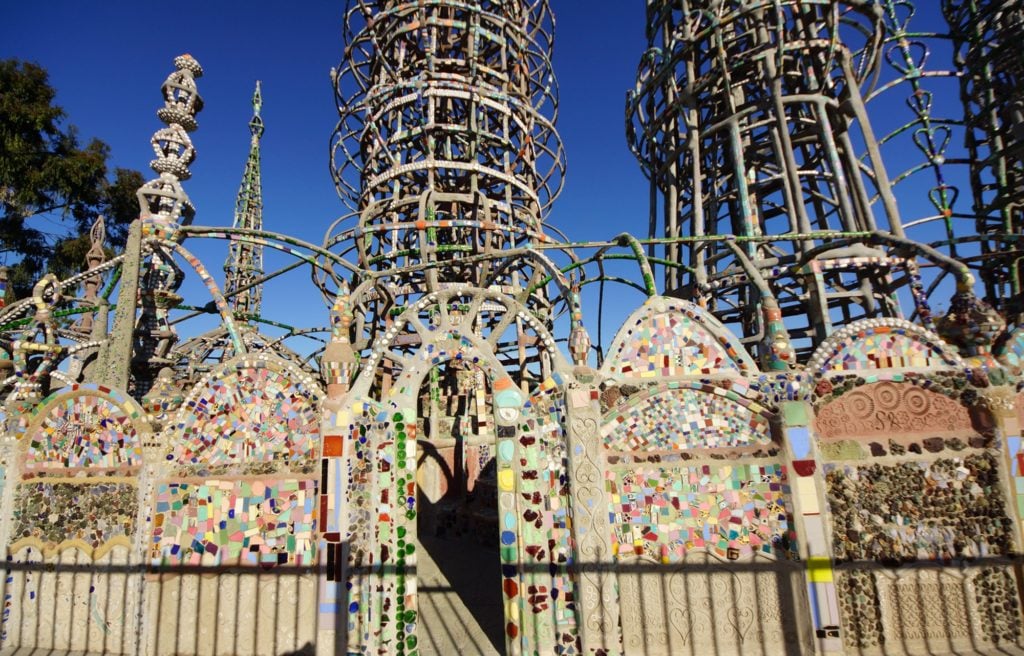
The mosaics at the Watts Towers. Courtesy of Flickr.
Ties Under Strain
In an interview with artnet News, DCA general manager Danielle Brazell, who was named among the most influential local female leaders by LA Magazine this year, said she appreciated the appeals process of which Hooks took advantage because it ensures politics don’t drive personnel decisions.
When I asked about community concerns over the DCA’s vision for the Watts Arts Center Campus, she explained, “I have always asserted that […] it’s of course a community-led vision for the campus and we’re in an active process to co-design that.” She added, “The community really has to tell the department what it needs and what it wants.”
Edward Landler and his colleagues want the DCA to assure community members that it will help protect local culture as South Los Angeles changes. Their sense of urgency is amplified by the fact that the Watts Towers Arts Center does not have the cachet of certain of the organizations moving in, like LACMA. The center also does not regularly attract the attention of the established art world—the LA Times has not reviewed an exhibition there since 2012. But it does consistently exhibit locally respected artists, provide quality arts programming for youth, and nurture the legacy and grounds of the Watts Towers.
On September 13, 2018, the Civil Service Commission reviewed the hearing examiner’s recommendation that the three-week suspension be reduced to five days. The commission refused to formally accept Hooks’s boarding pass and stamped passport as addenda to the record because they did not see why she could not have produced evidence of her travel during her July appeals hearing. Yet having seen this evidence, they pushed the DCA’s representative to admit, eventually, that the department may have been mistaken. The handful of Hooks supporters grouped on the left side of the room groaned and whispered to each other in frustration.
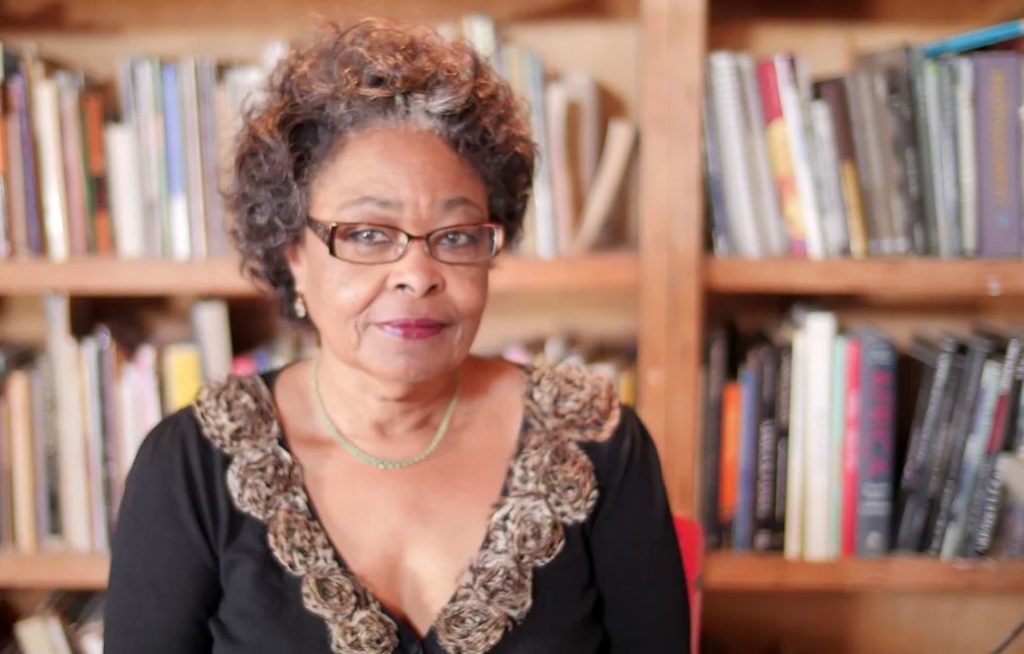
Rosie Lee Hooks. Courtesy of Watts Towers Arts Center.
After over an hour of arguments, the commission president said, “I think we need to wrap it up.” All five commissioners agreed Hooks had not knowingly violated policy. All but one agreed to dismiss the charge that Hooks had behaved insubordinately by allowing work to continue on the mural. Her suspension revoked, Hooks would receive back pay.
“This is the most unsatisfying win I’ve ever experienced,” Stern, her lawyer, said as he left the room. Hooks was in tears. Yet as she exited, she still gave the security guard, her lawyer, and friends invitations to the 37th Annual Watts Towers Day of the Drum Festival happening later that month.
Hooks has been back at the center since the summer. But these rifts are still conspicuous. As soon as you walk into the galleries, you encounter a series of letters and a petition. The letters—addressed to Councilman Buscaino, Danielle Brazell, and Mayor Eric Garcetti—ask that the center be better funded and make a case for its value to the community. In other words, the grassroots energy of an organization used to fighting for resources announces itself immediately.
“I don’t know if that was an individual retaliatory action or if it’s part of a bigger plan to out her and bring in someone they like, who will agree with whatever their plans are,” said Chioma Agbahiwe, vice president of the task force, of the suspension. “I just don’t know. So we’re left to figure out the best ways to advocate for the towers, the center and for Ms. Rosie, who is of the community, for the community.”
Follow Artnet News on Facebook:
Want to stay ahead of the art world? Subscribe to our newsletter to get the breaking news, eye-opening interviews, and incisive critical takes that drive the conversation forward.
